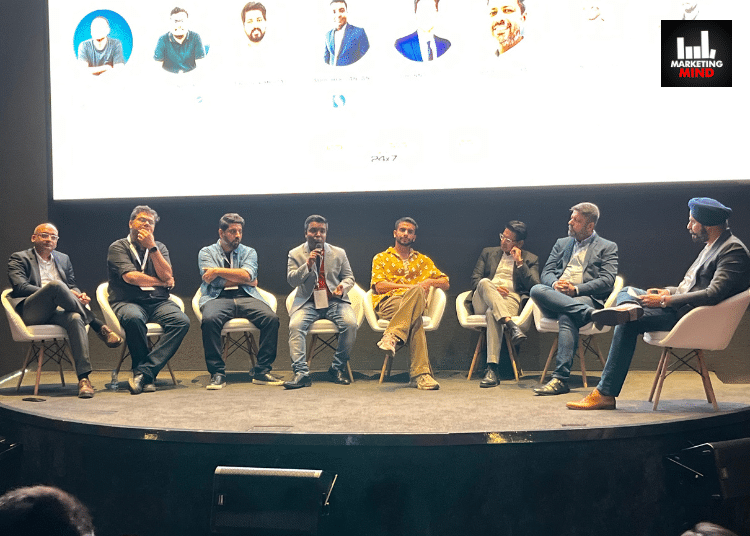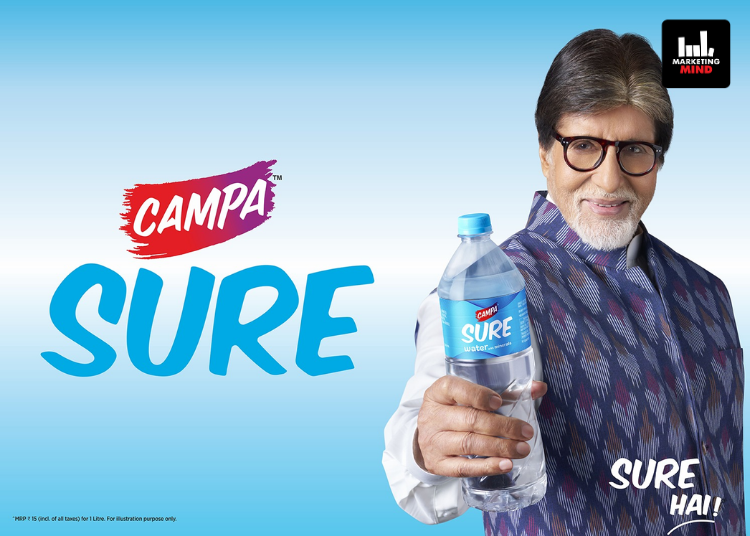In today’s digital-first world, brands are increasingly recognising the untapped potential of vernacular content and loyalty strategies. As consumers become more discerning, they expect brands to engage with them in their native languages and build meaningful, long-term relationships.
This shift has led companies to reassess how they approach influencer collaborations, not just for short-term gains, but for fostering deeper brand loyalty that aligns with the cultural nuances and everyday realities of their audiences. The focus is no longer just on immediate conversions, but on creating a lasting impact that resonates with diverse demographics.
During the panel discussion titled ‘Burning Underrated Opportunities – Vernacular and Loyalty’, at India Influencer Conclave 2024 by iCubesWire, industry leaders including, Gaurang Thosani, Head of Digital Marketing, Royal Sundaram Insurance; Abhishek Ranjan, Digital Head (Spiceco), DS Group; Nikhil Girdhar, General Manager Marketing, Taco Bell; Priyank Pant, Senior VP and Head Brand Marketing, Paisabazaar; Abhishek Mehta, Head of Marketing, Bagrry’s; Aabhinna Suresh, Chief Digital and Marketing Officer, Bajaj Capital; Vishnu Kaushal, Content Creator – Entertainment and Comedy and Gurjot Shah Singh, Client Success Leadership, EssenceMediacom, weighed in on the importance of creative freedom for influencers.
They also highlighted how overly rigid brand guidelines can stifle authenticity, resulting in content that lacks the personal touch audiences crave.
Ranjan emphasised that to ensure content is both relevant and engaging for a brand, several key aspects must be considered. First, it’s essential to grant creators creative freedom. Too often, brands impose excessive guidelines, which can hinder the creator’s authenticity.
Second, the brand’s expectations need to be crystal clear, focusing on one objective at a time instead of overwhelming the creator with too many demands. Minimal feedback is crucial as too much input can stifle creativity. Additionally, careful selection of influencers is vital. The chosen influencer must align with the brand’s identity and target audience. If the influencer’s content or follower base doesn’t resonate with the brand’s messaging, it won’t yield the desired results. Ultimately, there must be alignment on all fronts for the partnership to succeed, he added.
Meanwhile, Kaushal stated, “I believe branded content offers a win-win-win scenario rather than a win-lose one. As a creator, it’s one of my favourite areas to work in because it’s where true creativity shines. The challenge often lies in the fact that a brand has a product that needs to reach a specific audience. My role is to find a way to become the vehicle for that brand’s message.”
He went on to say that it’s one of the most creative endeavours a creator can take on, and it’s something he is genuinely passionate about. His brother, who is also a creator, shares this passion. Together, they don’t just generate content for brands, but they strive to truly understand their needs.
“I don’t see myself as just a creator with a certain number of followers. I aim to provide solutions. When a brand clearly communicates its objectives, whether it’s driving conversions, enhancing brand recall, or another goal, we work through the process to identify the type of content that will resonate with the target audience. That’s how I approach it, and I find the process both interesting and fulfilling,” Kaushal said.
“However, I believe one of the main issues arises from communication breakdowns. With so many layers and hierarchies involved, messages can easily get lost in translation. That’s where I think the real challenge lies,” he added.
When asked how his approach changes if the brief focuses on conversion rather than awareness, Kaushal explained that to truly grasp how conversions work, one needs to understand the platform. It’s not just about creator Vishnu, it’s about Vishnu on Instagram, with a specific number of followers, targeting a certain audience in particular cities.
“That’s the ecosystem we are operating in. When it comes to Instagram, conversions primarily happen through link-in-bio clicks and stories. There needs to be a clear mechanism for users to engage with links or be directed somewhere, making it a cohesive package,” Kaushal said.
“When a brand approaches you with a budget and a concept, the key is understanding the objective and working toward the end goal. I make these decisions not only because it’s a smart business move to maintain good relationships with partners, but also because I genuinely enjoy what I do. If I’m not delivering enough value as a creator, from my perspective, it’s a disservice to my work and would feel unethical,” he added.
Meanwhile, Mehta said that the issue seems to lie in the expectations. During pitches, brand agencies typically present a story of what is expected to happen. On the brand’s side, whether it’s the marketer, the marketing head, the CEO, or the CFO, there’s a specific target or ROI in mind. This is, after all, a ROI-driven business.
However, the challenge arises in how this is communicated, particularly through the layers between the agency and the brand. The brand head asks the brand manager, who asks the brand executive, who then communicates with the account executive, and so on, creating an endless chain. As a result, the core message often gets diluted, leading to an expectation mismatch. Ultimately, we need to recognise that the creator will do their job, but clarity in communication is key.
Agreeing to what Mehta said, Girdhar underscored that when one is shooting action, there is a process, you watch auditions, evaluate actors, and discuss things with the director. There’s a clear line of interaction. But when it comes to influencer content, how often are brand teams actually present on set during the shoot? Rarely.
“Occasionally, we share our perspective and achieve the desired result through mutual agreement. However, influencer content is almost entirely reliant on the influencer. There are also different categories of influencers, micro, premium micro, and macro. Macro influencers, of course, know what to do and are flexible. Micros, on the other hand, are up-and-coming, aspiring influencers, and working with them becomes challenging due to budget constraints,” Girdhar said.
“You need to collaborate across all these segments to maximise the value of your investment, making it particularly tough with micro-influencers. In those instances, you need to ensure that brand guidelines are properly incorporated and everything aligns as needed,” he added.
Ranjan added, “It’s surprising to discover that, when analysing influencer numbers across India, a significant 30% of the traffic often comes from Mumbai. Now, imagine a brand that isn’t present in Mumbai, if they’re paying Rs 8 to Rs 10 lakh for a creator, they’re losing 30% of their target market right there. Additionally, if a brand’s core target audience is primarily female, but the creator’s audience is 50-60% male, the campaign suffers from a substantial amount of spillage, wasting the brand’s investment.”
Singh highlighted that Influencer marketing is often focused on achieving short-term goals, especially when working with A-listers, macro, micro, or a mix of influencers. The primary focus tends to be on conversions, which are tactical and immediate, get the results, finish the campaign, and move on.
“The long-term impact of the campaign isn’t usually a priority, as the immediate conversions take precedence. However, there’s value in considering influencer marketing as a tool for building long-term loyalty. How do we approach that?” he asked.
Thosani answered, “When it comes to influencers, my current perspective is that their effectiveness is largely tactical for short-term campaigns. For long-term strategies, I would opt for someone like Shah Rukh Khan, as he has widespread appeal across the nation.”
Furthermore, he went on to say that influencers typically focus on specific segments, which limits their reach. While they may excel in their niche, such as finance, their audience is often more confined.
“Some influencers frequently promote products in highly consumable categories, but I wouldn’t want to associate finance with that approach. However, if I were launching a product targeted specifically at women, I would consider utilising an influencer from that segment. Ultimately, the choice of influencer depends on the product and its intended audience,” he added.
Similarly, Mehta emphasised that the effectiveness of influencer marketing hinges on the type of product being sold. For instance, if you are marketing a luxury vehicle like an Aston Martin, a micro or nano-influencer with only 10,000 followers is unlikely to make an impact. Such high-end products require endorsements from major celebrities, akin to Shah Rukh Khan or Tom Cruise.
“Conversely, when promoting a more affordable item with an average price of around Rs 7,500, the landscape shifts. These products are commonly used across households, making them more relatable. In this case, celebrities like Madhuri Dixit or Priyanka Chopra may not resonate as well, instead, the focus should be on community influencers. This is because local personalities offer content that feels more authentic and relatable to consumers,” Mehta said.
“People are increasingly drawn to nano and micro-influencers due to their daily life content, which fosters a sense of connection. This trend extends even to rural areas in India, where individuals share their everyday experiences online. This relatability is what attracts followers, as they see reflections of their own lives in these influencers,” he added.
When asked whether influencers contribute to building brand loyalty rather than just loyalty for a specific product, Mehta responded saying that brand strategies are never one-size-fits-all, they vary depending on the brand’s unique identity.
“For us, as a brand that offers healthy products like breakfast cereal, we collaborate with nutritionists, gym trainers, gym owners, and dietitians. These partnerships aren’t short-term, we commit to long-term relationships that last three to five years, with the same professionals consistently recommending our products. This approach has proven effective. You can’t expect instant success from a short campaign with influencers like Vishnu or anyone else, hoping for immediate results. The impact of such brief efforts tends to fade after a few days,” he added.
Ranjan said, “Let me share an example. Suppose Vishnu is creating content featuring Adidas shoes. Two months later, he’s collaborating with Nike, and perhaps after that with Reebok and other brands. It’s the same person promoting four different products, but without urging his audience to make any purchases. His followers are drawn to his lifestyle and perhaps find one aspect of him appealing, which is why they consistently return to his content, generating thousands or even millions of views. However, in such cases, the trust factor in his content decreases. The belief or engagement isn’t as strong.”
“Now, let’s look at an example with Akshay Kumar. Fortunately, heis our brand ambassador for Catch spices, and he’s been promoting the brand for about a year and a half. Unlike with multiple product endorsements, we have locked him to one category, he only promotes masala for one brand. When we conducted a brand track to evaluate his impact and whether we should renew his contract, we found that there was a 30-40% uplift in our overall brand performance, comparing non-Akshay campaigns to those featuring him. This clearly shows that Akshay has been effective for us,” he added.
Furthermore, he went on to say that on the other hand, when they ran a campaign in the Bengal market with 10 different influencers, they didn’t intend to replicate all 10. Instead, they might focus on just two influencers who are particularly niche to that market. They may not be widely known or heavily commercialised, but targeting them could be a more long-term strategy for us as a brand. This is how such collaborations are working for them.
Meanwhile, Suresh said, “In many of our discussions as marketers, we seem to have forgotten that branding is also about creativity and creators. You cannot simply outsource your brand’s creativity and expect influencers to handle it entirely. Influencers, as impact makers, play a role in influencing the decision-making process, but when we start expecting them to directly affect bottom-line sales, we lose sight of the bigger picture. While measurement is important, not everything should be quantified in that way.”
He added that what Vishnu pointed out was crucial in this context. Brand managers are, at their core, creators, they cannot fully outsource that responsibility. Influencers combine creativity with distribution, but we often overlook the distribution aspect.
“We tend to categorise distribution as something premium or label it under influencer types like micro or nano, but what we’re really chasing is distribution, not exceptional creativity. We’re not quite there yet as an industry. Someone needs to take that risk, and in some cases, like with Bhuvan Bam, that risk has paid off for a specific target group. I came across Vishnu’s Hogwarts-themed reels, and they were brilliant from a creative standpoint. But when I consider how to align my brand, such as Bajaj Capital Insurance, with that type of content, it becomes a challenge. We often end up using influencers for tactical purposes, missing the opportunity for deeper category evolution,” he stated.
Suresh highlighted that for instance, Bajaj Capital has been in the financial space for 60 years, offering products like mutual funds, FDs, and bonds. But asking Vishnu to dress in a particular way and talk about financial responsibility wouldn’t resonate with his audience. A viewer enjoying Vishnu’s content isn’t likely to buy the insurance product just because of that connection, which is where the challenge lies.
“It highlights the importance of distinguishing brand managers from performance marketers. Currently, many brand managers are trying to be performance-driven rather than focusing on creativity,” he added.
Meanwhile, Vishnu pointed out, “There’s a significant issue of false equivalence here. You’re comparing a single reel to a campaign where you’ve locked Akshay Kumar in for two years. That’s a completely different scale. Let me give you a relevant case study, Athletic Greens, a US-based nutrition company. They focused solely on influencer marketing by partnering with podcasters and fitness influencers who truly understood and believed in their product.”
These influencers consistently featured the product in every video. This strategy catapulted the company into the top 5 in the US, reaching a multi-billion-dollar valuation within just two years, Vishnu mentioned.
“The key takeaway is loyalty, this is what long-term influencer marketing can achieve. In the past, people idolised celebrities, but as celebrities joined Instagram, they became more relatable and just ordinary people. Consumers no longer feel compelled to buy a product simply because a star is promoting it. This is a crucial factor when determining who represents your brand. It’s not about fleeting endorsements but about meaningful, strategic partnerships,” Kaushal said.
“When it comes to influencers, long-term partnerships must be planned carefully. For the first three months, you focus solely on awareness, ensuring that the chosen creator resonates with your target audience (TG). If the content aligns with your TG, it can penetrate deeply, leading to awareness where millions of people are regularly exposed to your brand. The next phase shifts to more tactical promotion, guiding consumers on where to buy the product. This is how you build sustained, loyalty-based collaborations. A single reel won’t have that lasting impact,” he added
















